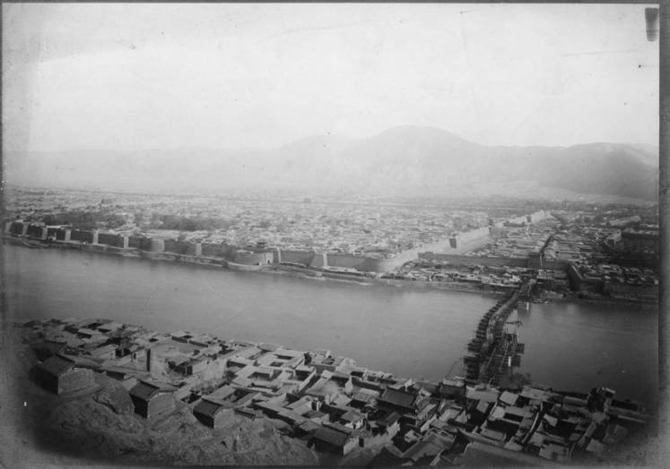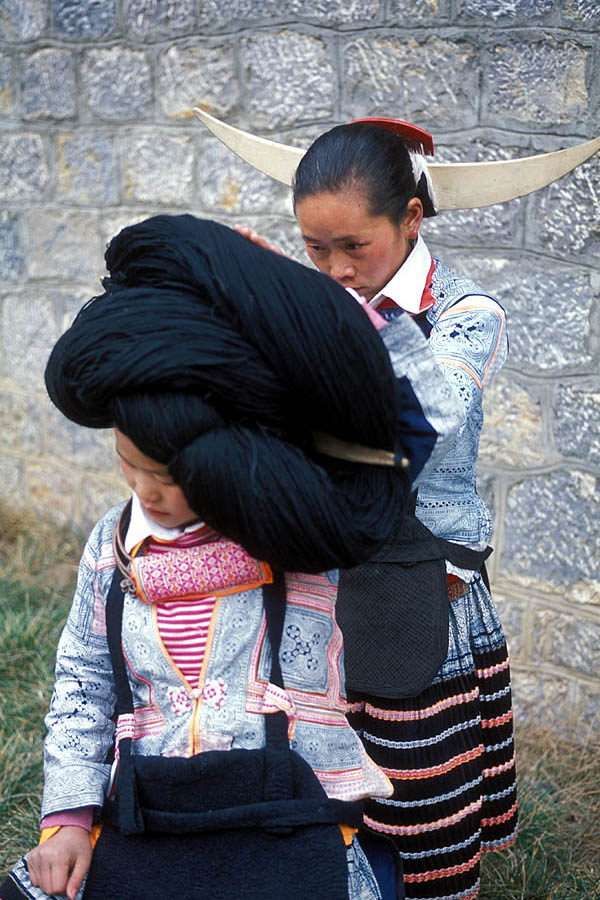|
Kukan
''Kukan'' (originally subtitled ''The Secret of Unconquerable China'') is a 1941 American documentary film co-produced by Li Ling-Ai and Rey Scott, and directed by Scott about the Chinese resistance to Japanese aggression during the early part of World War II (see Second Sino-Japanese War). Though Li served as co-producer and sponsor, she was credited as a "technical advisor" in its credits. The film was distributed in 16mm by Adventure Epics and given an Honorary Academy Award at the 14th Academy Awards. United Artists acquired the film for broader distribution in April 1942 and renamed it ''KUKAN: The Battle Cry of China'' before releasing it in 35mm in August of the same year. Considered lost for many years, a print was located and partially restored at the Academy of Motion Picture Arts and Sciences. In 2016, Robin Lung produced a documentary about Li, '' Finding Kukan''. ''Kukan'' is available as an extra on ''Finding Kukans home release. Production background Scott, a St ... [...More Info...] [...Related Items...] OR: [Wikipedia] [Google] [Baidu] |
Li Ling-Ai
Li Ling-Ai (李靈愛, also Gladys) (May 19, 1908 – October 2003) was a noted Chinese-American film producer, born in Hawaii, the sixth of nine children. Both her parents were first-generation Chinese immigrants who became doctors in Hawaii. Father Li Khai-Fai was a physiologist. Her mother Kong Tai Heong was an obstetrician. She attended Punahou School and graduated from the University of Hawaii in 1930. Life in China and return to the United States Prior to the outbreak of the Second Sino-Japanese War, she lived in China, studying Chinese music and directing theatre productions at the Beijing Institute of Fine Arts. Forced to leave China during the war, she returned to the United States and created theatre productions for the American Bureau of Medical Aid to China Fund Raising Program. She joined the board of directors of the ''Sun Chung Kwock Bo'' newspaper. Relocating to New York, she was a member of the Nationalities Program of the National Federation of Republican Women ... [...More Info...] [...Related Items...] OR: [Wikipedia] [Google] [Baidu] |
Finding Kukan
''Finding Kukan'' is a 2016 feature-length documentary investigating the story of Chinese Hawaii-born producer Li Ling-Ai, the female co-producer of the film ''Kukan'' (1941). Release After its world premiere at the Hawaii International Film Festival on May 5, 2016, ''Finding Kukan'' was screened at DOC NYC, CAAAMFest, the Seattle International Film Festival and at film festivals, conferences, churches and special events in Chicago, Los Angeles, San Diego, Atlanta, Vancouver, Winnipeg, Boston, Philadelphia, Washington, DC, Baltimore, Fresno, Mendocino, Oakland and Bend, among others. The film was broadcast September 7, 2018, on PBS television as part of the America ReFramed ''America ReFramed'' is a weekly independent documentary series broadcast on World Channel.Allison Willmor"America ReFramed brings 52 weeks of docs to PBS's WORLD Channel,"''IndieWire'', September 11, 2012. Retrieved 2013-11-13. Since 2012, Amer ... documentary series. Accolades References Extern ... [...More Info...] [...Related Items...] OR: [Wikipedia] [Google] [Baidu] |
Academy Honorary Award
The Academy Honorary Award – instituted in 1950 for the 23rd Academy Awards (previously called the Special Award, which was first presented at the 1st Academy Awards in 1929) – is given annually by the Board of Governors of the Academy of Motion Picture Arts and Sciences (AMPAS). Since 2009, it has been presented at the separate annual Governors Awards rather than at the regular Academy Awards ceremony. The Honorary Award celebrates motion picture achievements that are not covered by existing Academy Awards, although prior winners of competitive Academy Awards are not excluded from receiving the award. Unless otherwise specified, Honorary Award recipients receive the same gold Oscar statuettes received by winners of the competitive Academy Awards. Unlike the Special Achievement Award instituted in 1972, those on whom the Academy confers its Honorary Award do not have to meet "the Academy's eligibility year and deadline requirements". Like the Special Achievement Award, the ... [...More Info...] [...Related Items...] OR: [Wikipedia] [Google] [Baidu] |
14th Academy Awards
The 14th Academy Awards honored film achievements in 1941 and were held at the Biltmore Hotel in Los Angeles, California. The ceremony was briefly cancelled due to the Pearl Harbor attack on December 7, 1941. The ceremony is now considered notable as the year in which ''Citizen Kane'' failed to win Best Picture, losing to John Ford's '' How Green Was My Valley''. Later regarded as the greatest film ever made, ''Citizen Kane'' was nominated for nine awards but won only one, for Best Original Screenplay. John Ford won his third Best Director award for ''How Green Was My Valley'', becoming the second to do so (after Frank Capra), and the first to win the award in consecutive years (following '' The Grapes of Wrath'' in 1940). Much public attention was focused on the Best Actress race between sibling rivals Joan Fontaine, for Alfred Hitchcock’s '' Suspicion'', and Olivia de Havilland, for '' Hold Back the Dawn''. Fontaine won, becoming the only acting winner from a film di ... [...More Info...] [...Related Items...] OR: [Wikipedia] [Google] [Baidu] |
Guizhou
) , image_skyline = , image_caption = , image_map = Guizhou in China (+all claims hatched).svg , mapsize = 275px , map_alt = Map showing the location of Guizhou Province , map_caption = Map showing the location of Guizhou Province , coordinates = , subdivision_type = Country , subdivision_name = China , named_for = Gui - Gui Mountains ''zhou (political division), zhou'' (prefecture) , seat_type = Capital , seat = Guiyang , seat1_type = Largest city , seat1 = Zunyi , parts_type = Divisions , parts_style = para , p1 = 9 Prefectures of China, prefectures , p2 = 88 Counties of China, counties , p3 = 1539 Townships of China, townships , government_type = Provinces of China, Province , governing_body = Guizhou Provincial People's Congress , leader_title = Party Secretary of Guiz ... [...More Info...] [...Related Items...] OR: [Wikipedia] [Google] [Baidu] |
Lanzhou
Lanzhou is the capital and largest city of Gansu province in northwestern China. Located on the banks of the Yellow River, it is a key regional transportation hub, connecting areas further west by rail to the eastern half of the country. Historically, it has been a major link on the Northern Silk Road and it stands to become a major hub on the New Eurasian Land Bridge. The city is also a center for heavy industry and petrochemical industry. Lanzhou is the third largest city in Northwest China after Xi'an and Urumqi. Lanzhou is also an important center for scientific research and education in Northwestern China after Xi'an. The city is one of the top 60 major cities in the world by scientific research output as tracked by the Nature Index. It hosts several research institutions, including, Lanzhou University, Northwest Normal University, Lanzhou University of Technology, Gansu Agricultural University, Gansu University of Chinese Medicine, and Lanzhou Jiaotong Uni ... [...More Info...] [...Related Items...] OR: [Wikipedia] [Google] [Baidu] |
Tibet
Tibet (; ''Böd''; ), or Greater Tibet, is a region in the western part of East Asia, covering much of the Tibetan Plateau and spanning about . It is the homeland of the Tibetan people. Also resident on the plateau are other ethnic groups such as Mongols, Monpa people, Monpa, Tamang people, Tamang, Qiang people, Qiang, Sherpa people, Sherpa, Lhoba people, Lhoba, and since the 20th century Han Chinese and Hui people, Hui. Tibet is the highest region on Earth, with an average elevation of . Located in the Himalayas, the highest elevation in Tibet is Mount Everest, Earth's highest mountain, rising above sea level. The Tibetan Empire emerged in the 7th century. At its height in the 9th century, the Tibetan Empire extended far beyond the Tibetan Plateau, from the Tarim Basin and Pamirs in the west, to Yunnan and Bengal in the southeast. It then divided into a variety of territories. The bulk of western and central Tibet (Ü-Tsang) was often at least nominally unified under a ser ... [...More Info...] [...Related Items...] OR: [Wikipedia] [Google] [Baidu] |
Miao People
Miao is a word that the Chinese use to designate some ethnic minority groups living in southern China and Mainland Southeast Asia. Miao is thus officially recognized by the Chinese government as one of the largest ethnic minority groups that has more than 56 official ethnicities and dialects. The Miao live primarily in the mountains of southern China. Their homeland encompasses the provinces of Guizhou, Yunnan, Sichuan, Hubei, Hunan, Guangxi, Guangdong, and Hainan. Some sub-groups of the Miao, most notably the Hmong people, have migrated out of China into Southeast Asia (Myanmar, Northern Vietnam, Laos, and Thailand). Following the communist takeover of Laos in 1975, a large group of Hmong refugees resettled in several Western nations, mainly in the United States, France, and Australia. Miao is a Chinese term, while the component groups of people have their own autonyms, such as (with some variant spellings) Hmong, Hmu, Xong (Qo-Xiong), and A-Hmao. These people (except th ... [...More Info...] [...Related Items...] OR: [Wikipedia] [Google] [Baidu] |
Islam In China
Islam has been practiced in China since the 7th century CE.. There are an estimated 17–25 million Muslims in China, less than 2 percent of the total population. Though Hui people, Hui Muslims are the most numerous group, the greatest concentration of Muslims reside in northwestern China's Xinjiang autonomous region, which contains a significant Uyghurs, Uyghur population. Lesser yet significant populations reside in the regions of Ningxia, Gansu and Qinghai. Of Ethnic minorities in China, China's 55 officially recognized minority peoples, ten of these groups are predominantly Sunni Islam, Sunni Muslim. History The Silk Road, which comprised a series of extensive inland trade routes that spread all over the Mediterranean to East Asia, was used since 1000 BCE and continued to be used for millennia. For more than half of this long period of time, most of the traders were Muslim and moved towards the East. Not only did these traders bring their goods, they also carried with the ... [...More Info...] [...Related Items...] OR: [Wikipedia] [Google] [Baidu] |
Chongqing
ChongqingPostal Romanization, Previously romanized as Chungking ();. is a direct-administered municipality in Southwestern China. Chongqing is one of the four direct-administered municipalities under the State Council of the People's Republic of China, Central People's Government, along with Beijing, Shanghai, and Tianjin. It is the only directly administrated municipality located deep inland. The municipality covers a large geographical area roughly the size of Austria, which includes several disjunct urban areas in addition to Chongqing proper. Due to its classification, the municipality of Chongqing is the List of largest cities, largest city proper in the world by population, though Chongqing is not the most populous urban area. The municipality of Chongqing is the only Chinese city with a resident population of over 30 million; however, this number includes its large rural population. In 2020, Chongqing surpassed Shanghai as China's largest municipality by urban populati ... [...More Info...] [...Related Items...] OR: [Wikipedia] [Google] [Baidu] |
Buddhism In China
Buddhism in China refers to Buddhism that has been developed and practiced in China, based on the geographical location and administrative region instead of a particular Buddhist branch. Buddhism is the largest officially recognized religion in China. There are three main branches of Buddhism in China: Han or Chinese Buddhism, Tibetan Buddhism, and Theravada Buddhism. There is no definitive answer to the time when Buddhism was first introduced to China, but it is generally believed that this occurred around the time of the Han dynasty. Overview As China's largest officially recognized religion, Buddhists range from 4 to 33 percent, depending on the measurement used and whether it is based on surveys that ask for formal affiliation with Buddhism or Buddhist beliefs and practices. As with Taoism and Chinese folk religion, folk religion in China, estimating the size of the Buddhist population in China is challenging because the boundaries between Buddhism and other traditional ... [...More Info...] [...Related Items...] OR: [Wikipedia] [Google] [Baidu] |
Gobi Desert
The Gobi Desert (, , ; ) is a large, cold desert and grassland region in North China and southern Mongolia. It is the sixth-largest desert in the world. The name of the desert comes from the Mongolian word ''gobi'', used to refer to all of the waterless regions in the Mongolian Plateau; in Chinese, ''gobi'' is used to refer to rocky, semi-deserts such as the Gobi itself rather than sandy deserts. Geography The Gobi measures from southwest to northeast and from north to south. The desert is widest in the west, along the line joining the Lake Bosten and the Lop Nor (87°–89° east). Its area is approximately . Gobi includes the long stretch of desert extending from the foot of the Pamirs (77° east) to the Greater Khingan Mountains, 116–118° east, on the border of Manchuria; and from the foothills of the Altay, Sayan, and Yablonoi mountain ranges on the north to the Kunlun, Altyn-Tagh, and Qilian mountain ranges, which form the northern edges of the Tibetan Pla ... [...More Info...] [...Related Items...] OR: [Wikipedia] [Google] [Baidu] |







